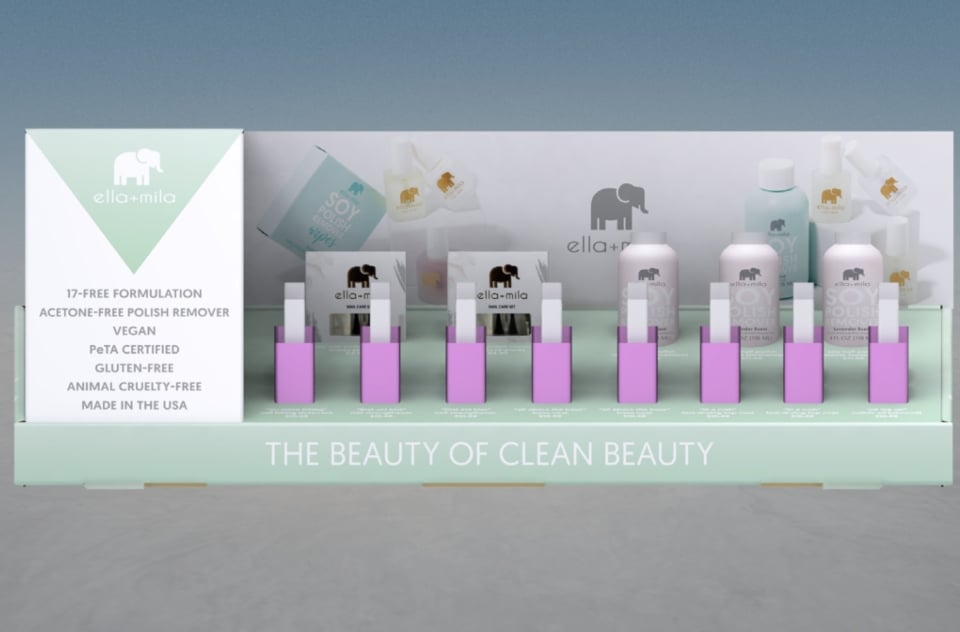Just sold your first retail display? Congratulations! Whether your products have been on retail shelves for awhile or you’re a D2C brand dipping your toes into the retail world, a retail display is an exciting opportunity for your company and to grow and reach more customers!
There’s a lot to do to be ready for your retail display launch, so we’ve compiled some things to know when designing and preparing your display.
1. Finding a Display Manufacturer
When you first partner with a retailer for a display program, you’ll need to find a display design and manufacturing company to work with for building your displays. Some retailers have a list of vendors they recommend for display manufacturing, and this list can be helpful for you if this is your first retail display. Your retailer has probably worked with these display companies before, which means they’re trusted by the retailer and can work with the display design requirements for your program.
If your retailer doesn’t have recommended designers to work with, make sure you find one with experience in displays for that retailer.
2. Displays Are Not One-Size-Fits All
It’s important to have a display manufacturer with experience for your retailer because displays vary between retailers. An end cap display for one retailer won’t be the same dimensions as an end cap display for the others—and your displays will have to fit perfectly into the space allotted by your retailer.
Experienced display manufacturers will not only be aware of this, but they likely have the measurements and requirements for many displays in many major retailers. They’ll be able to make sure the display is the right size and that artwork is sized and fitted correctly to look beautiful. This saves you a lot of time and worry about whether the design will meet standards and look great!
3. Utilize Line Drawings & 3D Renderings
Line drawings and 3D renderings of your display can help you start to see it come together, and these vital drafting stages help make sure everyone is in agreement with the design direction before anything is printed. While printed samples are also important for the process (see below), these initial steps are essential for developing the direction and final designs.
An idea that sounded great during a brainstorm may not look how you imagined on the 3D rendering, for example, or a design idea you weren’t sure of ends up being your favorite when you see the digital rendering.
Digital files are also helpful because they can be easily and quickly shared between you, the display manufacturer, and the retailer. This makes communication and changes easy, and they can be done from anywhere with an internet connection.
4. Use a Sample Display
A final sample display is invaluable. Once you’ve nailed down the design of the display, make sure you and your retailer get a real sample to set up and review. This gives you both a chance to actually see the display and catch potential errors or concerns that may not have been apparent in a drawing or 3D rendering.
This is important for things like colors, which vary slightly between computer displays, as well as ensuring products will fit in the way that was expected. Part of the retail program agreement includes the number of products that the display will hold, and the sample is time to make sure that quantity will fit attractively on your display—no more or less.
The sample display also helps you understand how consumers will see your products in the store. Is there a piece that may obstruct view or something that shopping carts may catch on? Now’s the time to test out the display and make any final changes.
5. Determine Your Project’s Shipping Process at the Beginning
How will your project get to your retailer? Logistics and shipping is a vital and time-conscious part of the display building process. Make sure you have a clear understanding and plan for shipping your displays and product to ensure everything arrives in the right places at the right times. Most stock rooms and warehouses where your displays and products may pass through don’t have space to hold large quantities for long, so logistics timing is key to a successful retail display launch.
When you have the logistics planned and in mind from the beginning, you can focus on the display instead of the shipping. Additionally, how your displays will ship can affect the design, so know this from day one limits changes that might need to be made later. If you’re unsure how to go about the shipping process, Bay Cities can help you with logistics and packout.
6. The Display Design Process is a Group Effort
A retail display design is ultimately a team effort between you, your display manufacturer, and your retailer. You and your retailer will need to sign off on the final display, which will need to fit the requirements provided by your retailer. The retailer should be looped in throughout the process and be getting line drawings, 3D renderings, and a sample display.
It’s very important to stay on top of communications from your display manufacturer and retailer regarding this process. Timelines can be tight, and shipping can be delayed or experience other unexpected issues, so keeping the conversation going is important to stay on track.
A retail display launch can be stressful even if you’ve been through the process before. A display manufacturer minimizes worry when they’re experienced in the whole process from concept to launch with multiple retailers. Your display should tell a story and communicate your brand’s values, and the right display manufacturer can bring those to life in the display that fits with your retailer’s requirements.
If you’re getting started with your first retail display program, Bay Cities can help make your display dream reality with our experience and existing relationships with retailers.
See how we helped other companies by clicking below:



/BC_Logo2_White.png?width=300&height=83&name=BC_Logo2_White.png)